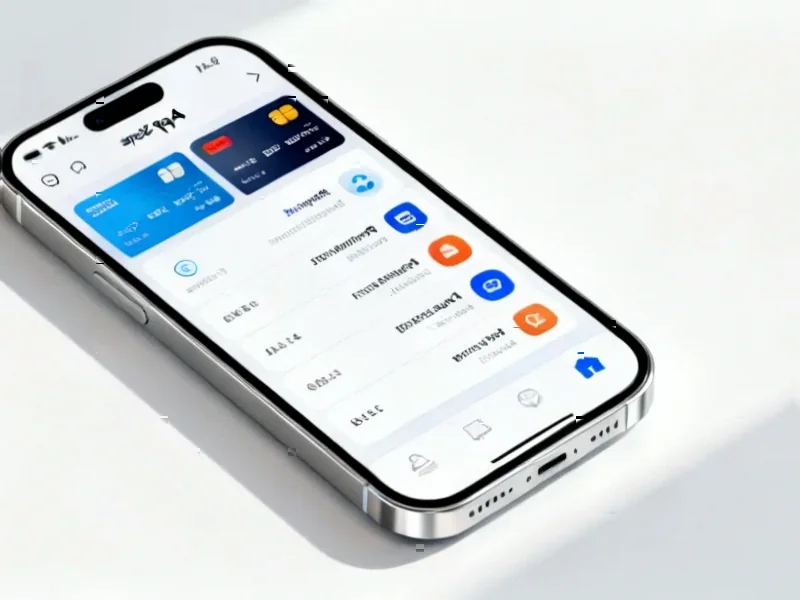According to TechRadar, Google has begun rolling out mandatory age verification systems in its Play Store that require users to prove they’re 18 or older before downloading certain applications. This mirrors a similar system recently implemented on YouTube and is primarily driven by new legislation in Texas, Utah, and Louisiana that mandates stricter age-gating and child safety measures. The verification process includes options like uploading a driver’s license or undergoing biometric scans, with failure to complete verification preventing access to a wide range of apps beyond just explicitly adult-rated content. While aimed at protecting minors, the requirement to submit sensitive personal documents has sparked significant privacy concerns among users. This move represents a fundamental shift in how tech giants handle user verification.
Table of Contents
The Unseen Privacy Implications
What TechRadar’s report doesn’t fully explore is the precedent this sets for data collection normalization. When users submit government-issued identification or biometric data to Google, they’re essentially creating a centralized database of verified identities that extends far beyond the Play Store’s original purpose. Unlike credit card information that can be changed if compromised, biometric data and government ID numbers are permanent identifiers. Once this data is collected, the potential for mission creep is substantial—what starts as age verification could easily expand to identity verification for other Google services, creating a comprehensive digital identity system controlled by a single corporation.
The Security Architecture Challenge
The fundamental security challenge here involves creating a system robust enough to protect highly sensitive data while remaining accessible to millions of users. Most concerning is the potential for creating a single point of failure—if Google’s verification database were compromised, it would represent a catastrophic data breach affecting users globally. Unlike password breaches where users can change credentials, a breach involving driver’s licenses or facial recognition data would have permanent consequences. The technical implementation details matter enormously: Is data encrypted at rest and in transit? How long is verification data retained? What access controls limit employee viewing? These unanswered questions represent significant security gaps.
The Broader Regulatory Context
This move reflects a larger trend in the Information Age where tech companies are increasingly becoming de facto identity verifiers. The state legislation driving these changes represents well-intentioned efforts to protect children, but creates a patchwork of requirements that may lead to inconsistent privacy protections across jurisdictions. More troubling is how this positions private corporations as gatekeepers of digital adulthood—a role traditionally held by governments. As other states and countries consider similar legislation, we’re likely to see an acceleration of this trend across all major app stores, not just Google’s ecosystem.
The Limited Alternatives Problem
Users facing these verification requirements have few good options. They can either submit their sensitive data or lose access to applications they may need for work, education, or essential services. This creates a coercive environment where privacy becomes a luxury rather than a right. The verification methods themselves present varying risk levels—credit card verification might expose financial data, while ID uploads create identity theft risks, and biometric options raise concerns about facial recognition databases. Unlike YouTube’s verification which primarily affects content consumption, the Play Store’s system impacts users’ ability to access tools and utilities, making the stakes considerably higher.
Broader Industry Implications
Google’s move will likely pressure Apple and other platform operators to implement similar systems, creating an industry standard that could extend beyond app stores to other digital services. The long-term concern is normalization: as users become accustomed to submitting sensitive documents for routine access, the privacy threshold for what constitutes reasonable verification will continue to lower. This could pave the way for even more intrusive data collection under the guise of safety and compliance. The technology exists to create privacy-preserving age verification that doesn’t require surrendering permanent identifiers, but these approaches appear absent from current implementations.
The Road Ahead
Looking forward, we’re likely to see increased scrutiny from privacy advocates and potentially regulatory intervention regarding how this data is handled. The European Union’s digital regulations, particularly around data minimization and purpose limitation, may conflict with these verification requirements. There’s also significant potential for legal challenges regarding whether private companies can mandate government ID submission for service access. As this technology evolves, the industry must develop less intrusive verification methods that balance safety concerns with fundamental privacy rights, rather than treating extensive data collection as the default solution.



